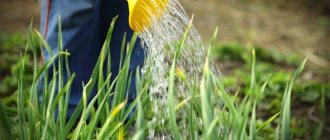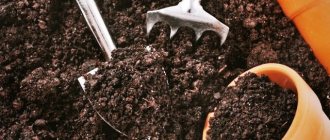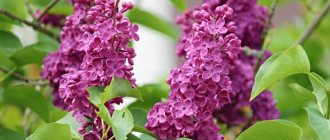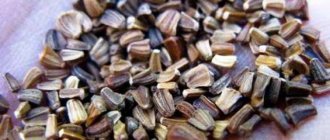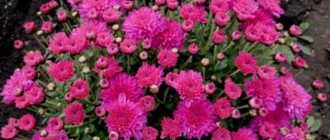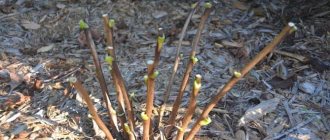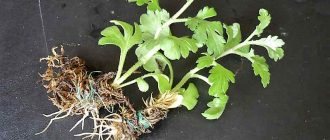- Requirements for soil, lighting and humidity
- Microelements for chrysanthemum
- Stages of feeding chrysanthemums
- Fertilizing in spring
- Top dressing in summer
- Fertilizer in autumn
- Care after flowering and preparation for winter
- Feeding chrysanthemums in a pot
- Tips for feeding
Even weather-resistant plants like chrysanthemums need proper care. They suffer not only from diseases and pests. These flowers are very demanding on the composition of the soil. Timely feeding of chrysanthemums is necessary to ensure normal growth and development, as well as long flowering.
Alenka is a chrysanthemum that gives long and lush flowering
Requirements for soil, lighting and humidity
When growing chrysanthemums, you must take into account several recommendations.
- A special soil mixture should be prepared. It should be loose and have drainage properties. Peat and compost are added to excessively dense soil. To improve drainage qualities, you will need to add coarse sand or fine gravel.
- Flowers should be planted on a small hill and in a sunny place, since chrysanthemums do not like darkness and high humidity. The plant is a light-loving plant, but the light must be diffused so that the sun does not burn its petals at midday.
- It is necessary to maintain average air humidity at 40-50%. The plant only needs spraying in the summer, at high temperatures. Soil moisture is required as the top layer of soil dries. But you should not water too much so that the roots of the plant are not affected by rot.
Conditions for growing home chrysanthemums
Varieties of indoor chrysanthemums were bred artificially. Beautiful appearance and small size are regulated by special stimulants. The plant will strive to return to its original, genetically determined appearance, so you need to know some rules for caring for the plant so that it will delight you with abundant flowering.
Usually only two types of chrysanthemum are grown in pots - bush and Chinese.
Place the flower in a cool room with fresh air - this is perhaps the basic rule that should be taken into account when growing. The temperature in the room should not exceed 18 degrees, and the plant should not be exposed to direct sunlight. The best temperature is from 10-14 degrees. Drooping leaves are a clear signal that the plant is too hot.
For lush and attractive flowering, chrysanthemums need to create suitable conditions. Gardeners tend to believe that this plant is unpretentious, which means. You don't need to take special care of her. But it's not
It is very important to follow the rules in caring for this delicate flower.
You should definitely pay attention to the following conditions:
Microelements for chrysanthemum
For health and good development, the plant must be planted in nutritious soil with a certain chemical composition. As they grow, the soil should be enriched so that chrysanthemums bloom. The following microelements can provide this:
| Elements | Substances containing these elements | What does the element affect? |
| Phosphorus | Phosphoric acid potassium, superphosphate or double superphosphate | Promotes the formation of the root system and plant growth, stimulates flowering |
| Potassium | Potassium salt | Helps fight diseases and also improves flowering |
| Calcium | Calcium sulfide or nitrate | Strengthens the root system |
| Manganese | Manganese sulfate | Helps fight leaf chlorosis (i.e. lack of chlorophyll in the plant) |
| Iron | Iron sulfates or chlorides | Improves plant growth, combats pale yellow leaf color |
| Bor | Boric acid | Promotes more lush and long-lasting flowering, strengthens the root system |
| Nitrogen | Calcium or potassium nitrate, ammonium nitrate | Improves leaf growth and color |
| Magnesium | Magnesium sulfate | Improves the color of foliage if it is pale, variegated, marbled |
| Zinc | Zinc sulfate | Accelerates the growth of leaves, including when crushed, and also improves their color when pale green areas appear |
| Copper | Copper | Fights fungal diseases |
Nitrate - nitrogen fertilizer
Mistakes gardeners make when fertilizing chrysanthemums
Fertilizing will not bring the expected result if applied incorrectly:
- On dry soil - once in the ground, the solution burns the root system. Thanks to water, it is distributed evenly, and nutrients quickly pass into a form accessible to plants.
- Untimely - it is important to enrich the soil with those elements that the plant requires during a specific period of growth. Thus, nitrogen introduced in the fall will cause the death of the chrysanthemum, because it will not be able to prepare for wintering.
- Pouring the solution onto the leaves can cause burns. For foliar treatment, less concentrated compounds are used that do not harm the above-ground parts.
Spring feeding is an important stage in caring for chrysanthemums. It provides them with energy for development in the coming season, prolongs and enhances flowering. If everything is done correctly, the plant will delight the owner with bright colors from June until late autumn.
Stages of feeding chrysanthemums
- The first feeding will be needed immediately after planting the chrysanthemum in the ground. The earth is enriched with mineral or organic compounds with the addition of superphosphates.
- The second feeding is carried out two weeks after planting. At this time, the growing season begins, and the plant needs complex fertilizers for chrysanthemums, which improve growth and strengthen the root system.
- The third feeding is needed before the chrysanthemum blooms, at the stage of bud formation. The process is well stimulated by organic matter with phosphorus sulfates and potassium salts.
Fertilizing in spring
Both seedlings and chrysanthemum bushes, which were transplanted into pots for the winter, must be transplanted into open ground in the spring, after the soil has warmed up. The soil must be pre-enriched with organic fertilizers (manure, humus, peat) when digging the area for the future flower bed. Afterwards, the already rooted seedlings are fertilized with minerals.
Feeding of chrysanthemums that have overwintered in the ground begins in the spring, two weeks after emergence. At this stage of growth, the plant needs minerals, especially nitrogen . Thanks to it, chrysanthemum quickly increases the number of shoots and plant growth improves. The microelement is also responsible for the rich color of leaves and flowers. It is necessary to fertilize plants in the spring strictly at the root, avoiding getting the substance on the leaves - this can cause burns.
Phosphorus is one of the most important elements for plant organisms
Autumn fertilizers for the garden
In the fall, the harvest is usually already harvested. Of course, there are winter crops. For example, when planting winter garlic, the soil needs to be prepared in late August - early September. To do this, you can add 10 kg of humus, 1 cup of chalk, 2 tbsp for digging per 1 sq.m of area. potassium sulfate and 1 tbsp. superphosphate.
Planting garlic before winter - all the subtleties of planting with cloves We tell you how to properly plant garlic in the fall.
But winter onions and garlic are unlikely to take over your entire garden. Therefore, the freed soil can be properly fertilized without fear of burning the tender roots of the plants. What fertilizers does the garden need in the fall?
Organic fertilizers for the garden
Rotted manure or compost is applied once every 3-4 years for digging at the rate of 3-4 kg per 1 sq.m.
Bird droppings are a more concentrated fertilizer. Therefore, it is applied at the rate of 2 kg per 1 sq.m of bed.
Cabbage will especially like soil fertilized with ash in the spring.
This fertilizer is also applied when preparing a site for potatoes, tomatoes, eggplants, peppers, radishes, dill, carrots, parsley, peas, beans, beets, and watercress. If you add ash every few years, you can use about 1 kg per 1 sq.m. But if you feed the plants more often, 1 cup per 1 sq.m. will be enough for most of your green pets. Not only is ash an excellent source of minerals, but it also reduces soil acidity.
Ash - what kind of fertilizer is it, and how to use it correctly Ash is not just a fireproof residue after combustion, but also a valuable microfertilizer. Our material contains everything about how ash is useful for plants, how to use ash as a fertilizer, how to dilute ash for feeding, what spraying with an ash solution is...
And in the case of onions and garlic, ash can become a prophylactic agent that protects against root rot. To do this, you can add up to 2 cups of ash per 1 sq.m. during digging in the fall.
Green manure as autumn fertilizer
Green manure is a plant with a powerful root system and rapidly growing green mass. They can be sown after harvesting and then mowed and incorporated into the soil. During the decomposition process, such plants enrich the soil with nutrients.
Legumes can be used as green manure (field peas, lentils, clover, annual lupine, spring vetch, alfalfa, sweet clover); cereals (spring oats and barley, millet, winter varieties of rye and wheat). Phacelia, sunflower, buckwheat, amaranth, and marigold have proven themselves well as green manures.
What kind of green manure can be sown in the fall after harvesting? We'll tell you how to improve the soil with the help of autumn planting of green manure plants.
Mineral autumn fertilizers for the garden
The most popular autumn fertilizer is superphosphate, which, due to its slow decomposition, is ideal for application to the soil during the rainiest season. On average, ordinary superphosphate is applied at the rate of 40-50 g per 1 sq.m., the rate of application of double superphosphate is 20-30 g per 1 sq.m.
A classic autumn fertilizer is also potassium chloride.
Before using it, it is important to carefully study the instructions in order to correctly calculate the dosage. But on average they use about 10-20 g of fertilizer per 1 sq.m. When working with potassium chloride, it is recommended to wear goggles and a respirator.
When working with potassium chloride, it is recommended to wear goggles and a respirator.
Potassium sulfate does not contain chlorine, which is harmful to many plants. In autumn, granules are usually embedded in the soil to a depth of 10-20 cm. Application rates depend on the plants that will subsequently grow in this area. On average, about 15 g per 1 sq.m is applied for cucumbers, 20 g for tomatoes, 25 g for cabbage and turnips, and 35 g for potatoes.
Whatever fertilizer you choose for your garden, vegetable garden, flower bed or lawn, it is important to remember that the harvest will not be a joy if it brings harm instead of benefit. But, as you know, the amount of certain elements in seemingly similar fertilizers from different manufacturers may differ slightly. And even organic fertilizing in significant quantities can contribute to the accumulation of nitrates in the crop
An eloquent example of this is manure or chicken droppings. Therefore, when applying any autumn fertilizers to the soil, it is important to check the instructions or recommendations of experienced specialists, and in no case exceed the dosage
And even organic fertilizing in significant quantities can contribute to the accumulation of nitrates in the crop. An eloquent example of this is manure or chicken droppings.
Therefore, when applying any autumn fertilizers to the soil, it is important to check the instructions or recommendations of experienced specialists, and in no case exceed the dosage
Top dressing in summer
During the summer, the procedure is carried out every 10 days. Feeding with potassium salts and superphosphate with a small nitrogen content is required. Other minerals listed in the micronutrient table are added as needed. It is necessary to feed chrysanthemums only on moist soil - after rainfall or watering.
Before flowering, at the time of budding, it is necessary to fertilize with phosphorus sulfates. For early varieties this period will begin in July, and for late varieties - in August. Phosphorus is responsible for the number of buds. Thanks to it, you can get lush, long-lasting flowering and strengthen the plant’s immunity.
Gardening tips
In order for the plant to feel comfortable and enjoy flowering, it is advisable to listen to the tips below:
- When applying fertilizer, it is advisable to pour it at the root so as not to harm the health of the flower.
- Feeding chrysanthemums in the summer will ensure the presence of lush flowering in the autumn.
- You can shorten the daylight hours by covering the bushes after 6-7 pm with special boxes or screens.
- During the first two months after planting, the young seedling must be protected from direct sunlight.
- In the second ten days of July, gradually reduce the amount of watering to a minimum so that the plant gradually prepares for winter.
- Remove some of the established buds, helping the remaining flowers gain color and bloom.
- Apply fertilizers containing sufficient amounts of potassium and phosphorus.
- Water with a growth stimulator using the dosage: 1 ml of the substance per 10 liters of water.
Important! Administer the drug "Ovary" at intervals of 4 times in 30 days
- In order for the chrysanthemum to begin to bloom again in the fall, it is necessary to set it to spring temperature.
- If mature chrysanthemums live in the flowerbed, you cannot use fresh cow manure.
- To prevent the flowers from burning from the fertilizer, it is advisable to introduce it into the soil in the flowerbed in the fall, then it will have time to rot during the cold weather.
- It is not recommended to apply nitrogen in the autumn, so as not to cause the plant to die.
- Water only with rainwater or settled water at room temperature.
- When watering, it is advisable to use a watering can without a diffuser so that moisture does not fall on the leaves, as it can harm them.
- It is advisable to remove weeds at the site where the flower grows once every 7 days.
- To make it easier to fight grass, pests and diseases, you can mulch the planting site with leaves, sawdust, and straw.
- In order for the flower to successfully survive the winter, it is necessary to cut off the stems, leaving up to 10 cm.
- If the bush is large and tall, it is advisable to provide it with support on one side so that the stems do not break in a strong gust of wind.
- To maintain the required air humidity, it is recommended to spray the flower with a spray bottle in the morning and evening.
- It is imperative to pinch the shoots of the flower when they reach a length of 10-12 cm in order to increase the life of the plant and give the bush beauty.
On a note! To ensure that the main stems of the flower are strong and long-flowering, it is advisable to trim off all the side leaves and stems.
To summarize, it is worth noting that the types of feeding were considered and how to feed chrysanthemums in the summer, before and after flowering, so that they feel comfortable and please the eye for several years.
https://youtube.com/watch?v=SLgJlE1jiV4
Chrysanthemums are one of the most beautiful ornamental plants that can decorate a flower bed. It is difficult to find such a variety of shapes and colors. But for the flowers to look like in the picture, they need appropriate care and constant feeding.
This article will help you understand:
what fertilizers are needed for chrysanthemum budding;
how to feed chrysanthemums before flowering and during flowering;
How to feed chrysanthemums in August and autumn.
If we draw an analogy between flowers and vegetables, it turns out that flowers are the fruits of ornamental plants. Fruit and vegetable crops require potassium to meet commercial standards. The same thing happens with flowers.
Care after flowering and preparation for winter
In order for a perennial chrysanthemum to successfully overwinter and delight you with a riot of colors in the next year, you need to take care of the plant in late autumn:
- feed with phosphorus and potassium fertilizers;
- prune the chrysanthemum bushes, leaving no more than 15 cm of the stem;
- dig up the soil to protect the roots of the plant from exposure to low temperatures;
- cover the bushes with a layer of dry leaves up to 40 cm high and cover with dry branches - this will delay the snow from falling directly on the plant and will additionally save it from frost.
Option for covering chrysanthemums for the winter
How to feed lilies in the fall?
To increase winter hardiness and strengthen lily bulbs at the end of the summer season, feed the flowers with phosphorus-potassium fertilizer. With the arrival of spring, the “fed” plant will not need much energy to recover, which means that lush flowering will not take long to arrive.
Water the lilies with this nutrient solution: dilute 1.5 tbsp in 10 liters of water. potassium magnesia and 2 tbsp. superphosphate. Like other garden flowers, lilies can be mulched with compost (10 cm layer) before winter to protect the bulbs from freezing.
How and what to feed lilies in the garden for lush flowering. Your garden lilies bloom poorly or the flowers on the stems are very small - do not despair. The problem can be solved with the help of fertilizing.
Feeding chrysanthemums in a pot
Chrysanthemums growing in the garden will not feel comfortable at home, since they are cold-loving plants. Therefore, breeders have developed a sufficient number of varieties of chrysanthemums that can be grown at home. The most common are Korean varieties. They are distinguished by the compact size of the bush (height 20-40 cm) and spherical shape. They are perfectly adapted to low light conditions.
Chrysanthemum in a pot quickly depletes the soil. To maintain long and lush flowering, it is necessary to feed it with potassium monophosphate. This fertilizer is a mixture of several minerals: nitrogen, phosphorus, potassium. Feeding is carried out at intervals - every 10 days. To improve the fertility of the soil in a pot, the fertilizer is supplemented with organic additives, a solution of mullein is suitable.
Feeding is carried out strictly until the chrysanthemum blooms, and is renewed as necessary to extend the flowering period and increase its splendor.
Plant care
Although the chrysanthemum is considered a rather unpretentious plant and caring for it does not cause problems, in order for the plant to appear in all its glory, some nuances are necessary.
The ability to tolerate drought well does not mean that chrysanthemum does not need plenty of moisture. Flowers need regular watering. Only in such conditions is it possible to form powerful buds and lush inflorescences. If the summer is dry and windy, you need to constantly spray. Early morning or late evening is best for this.
Strawberries at home all year round! These veneers are 100 times better than false teeth! And they cost pennies! Up to 15 kg of strawberries every month! Dental veneers for pennies! Up to 15 kg of strawberries every month! The famous overlay veneers are now in Russia!
When caring for chrysanthemums, special attention is paid to the beginning of summer, when the slightly delayed plant needs to win the fight against weeds. The problem can be solved by careful weeding and loosening. Young leaves are supported by mulching, including peat, humus or finely chopped moss. After the plant gains strength and the formation of bushes is completed, there is no need for weeding.
Since the plant is similar to melons, the most important factor in the beauty and health of chrysanthemums is timely and rational feeding.
Tips for feeding
Regardless of the season, when fertilizing both street and potted chrysanthemums, you must remember the important requirements for this procedure.
- The composition of the soil should be selected depending on the characteristics of the chrysanthemum variety.
- Fertilizers are applied in accordance with the season, needs and period of plant development.
- For fertilizing to be effective, it must be done after rain or watering, distributing the fertilizer evenly.
- When feeding, substances should be applied with caution, avoiding contact with leaves and stems in order to avoid burns and death of the plant.
